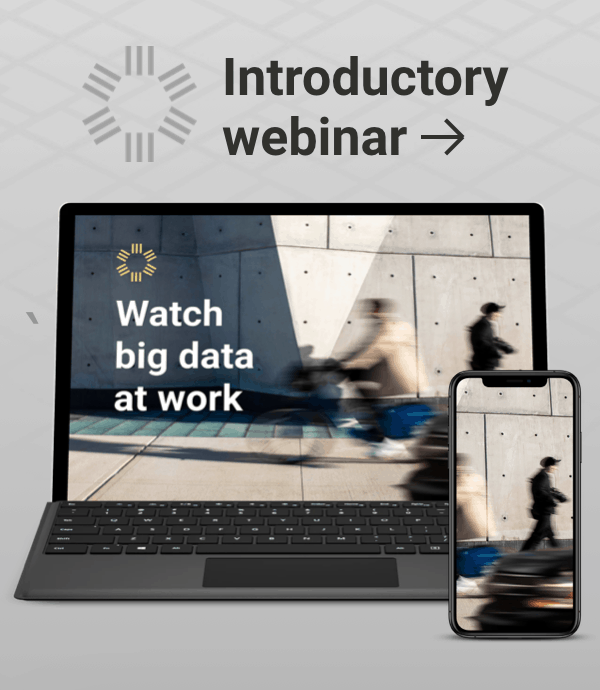
Autonomous Vehicles, Big Data, and Our Transportation Future

Autonomous vehicles (AVs) are beginning to dominate much of the public conversation about our transportation future. This was certainly the case at South by Southwest, where I participated in an excellent panel discussion at the C3 Smart Mobility Showcase: “Smart Cities and Data-Driven Deployment of Autonomous Vehicles.” Nearly every single panel at the showcase was related to AV technology. People in that tent were very excited about AVs. However, I found myself thinking back to the 12-lane urban highway that my taxi driver took from my hotel to the event. The local bus would have taken over three times as long, and the drive reminded me that AVs are not a panacea for all that ails our transportation system.
Don’t get me wrong: Talking about AVs at an event like SXSW makes sense, and I’m glad we’re having these conversations. But I think the broader discussion around AVs needs to be focused on accountability. The impact of AVs could be very positive or very negative, as many transportation experts have suggested. In this blog post, I’ll explore how a data-driven approach can help us strike the right balance with AVs, and hold ourselves accountable for achieving a positive outcome for all.
I often imagine happily snoozing on the way to work in my self-driving “bed-mobile,” or “autonomous RV” – an “A-RV,” if you will. With my A-RV, I could live far from the city on a secluded mountaintop, but still easily commute to my job as the CEO of a tech company in San Francisco. It’s a pretty magical scenario: Quiet country living and a high-powered job, no telecommute required. But imagine if everyone who currently rides public transit into San Francisco like I do also started “driving” A-RVs instead. The result would be even more congestion than Bay Area residents face today – and traffic is already pretty terrible. Plus, I expect that this luxurious sleeping commute might be more available to CEOs than to waiters and teachers, who would suffer from the congestion.

What Our Transportation Future Could Be
Before considering accountability, let’s outline three potential outcomes of autonomous vehicles for our transportation future. Of course, these are largely simplified but they illustrate the trends:
- Transportation Utopia
Clean, electric, multi-passenger AVs shuttle everyone from point A to B in data-optimized carpools. They’re affordable and pleasant to ride in, all communities have equal access, and riders chat with their neighbors, building community cohesion. AVs effectively expand our public transit systems by linking up the neighborhoods that lack options today to workplaces and recreation. VMT goes down because people rarely ride in single-occupancy vehicles. Everyone benefits from reduced congestion, faster travel times, and streets that are safer to walk and bike on.
- The Status Quo Plus
A mix of privately owned electric and gas-powered AVs drive their owners from point A to point B. They travel alongside automated taxis, ride-hailing fleets, and public buses. Over time, congestion and VMT increase due to reduced cost of transportation. AVs operate on a consistent platform and excellent car-to-car communication prevents accidents, so our roads are safer. However, investment in rail and light-rail drops. Less-affluent communities that cannot afford to invest in AVs are more isolated, especially low-income residents. People walk and bike less, so obesity rates continue rising.
- Dirty Doomsday
Our roads are clogged with mostly gas-powered, car-sized AVs that circle city blocks endlessly looking for riders. While fewer car accidents occur, obesity and isolation continue to increase as single-occupancy AV ridership climbs. A dizzying array of AV software platforms that vary by manufacturer cause major car-to-car communication challenges. Systems are easily compromised by criminal hackers. A poorly managed roll-out has created a patchwork system of AV ownership. Affluent families purchase their own AVs vehicles while the less-affluent do without, often relying on aging transit systems.
Our jobs as transportation experts, civic leaders, and policymakers must be to put us on track to ride the wave of AVs as close to “Transportation Utopia” as we can. This will require education of citizens and leaders, alongside rigorous accountability relying on hard data.

A Data-Driven Approach to Accountability
Here are three ways that we can use data to ensure we drive the first scenario forward:
1. Measure What’s Happening Today
We cannot determine if AVs are moving us in a positive or a negative direction without a complete understanding of the status quo. Unfortunately, too many localities today lack the resources for regular, empirical travel studies, and they rely on infrequent and overly broad data sources that fail to account for the impact of new technologies on different neighborhoods.
Before rolling out AVs, communities must complete comprehensive, empirical transportation studies and reach a consensus on current travel behavior. They should zero in on the travel behavior in the topic areas that are most important to the community, such as:
- Equitable access to transportation
- Safety levels of particular streets and areas
- Current average VMT per day
- The corridors that are most congested
- Levels of public transit ridership
Planners and policymakers should then set goals for AVs to improve key metrics for each of their focus areas. As is typical for major planning initiatives today, communities should hold stakeholder meetings to ensure that community members share a common vision for AV deployment and agree on its goals.
2. Measure Persistently Over Time
As AVs are rolled out, the community should proactively monitor their impact on each of the previously identified focus areas, and track progress towards their established goals. This requires early, binding agreements with automakers and AV network providers to share data (in an appropriate manner) about usership. That’s something which has not happened with other technologies, such as ride hailing apps.
Local public agencies must be able to publicly report on the impact of AVs on a regular basis so that issues are uncovered quickly. This will help keep the community engaged in the AV roll-out. It will also help ensure that all stakeholders remain invested in the transportation future that meets their community’s needs. 3. Identify and Fix Problems as They Are Identified
Thanks to frequent monitoring of changes over time, transportation experts will know when AVs are not helping the community reach its goals – or are even causing a backward slide. Transportation planners can then act quickly to resolve these problems before they snowball, and learn from other communities’ successes and failures.
For example, if a community notices that AV adoption is causing increased congestion on a particular corridor, they could mandate that only AV shuttles be allowed to use that corridor instead of single-occupancy AVs. If there is an increase in accidents, they could pause the program to examine why accidents are on the rise, examine software and hardware issues, and prevent future accidents. But without a full understanding of the status quo and established goals, it will not be possible for communities to quickly identify potential problems.
How We Can Help
One of our top goals at StreetLight Data is to make it quick, easy, and affordable for communities to collect transportation data. Our Regional Subscription to StreetLight InSight® can reduce communities’ data collection costs by 50%. It makes comprehensively measuring travel behavior on a monthly basis a cost-effective option for public agencies.